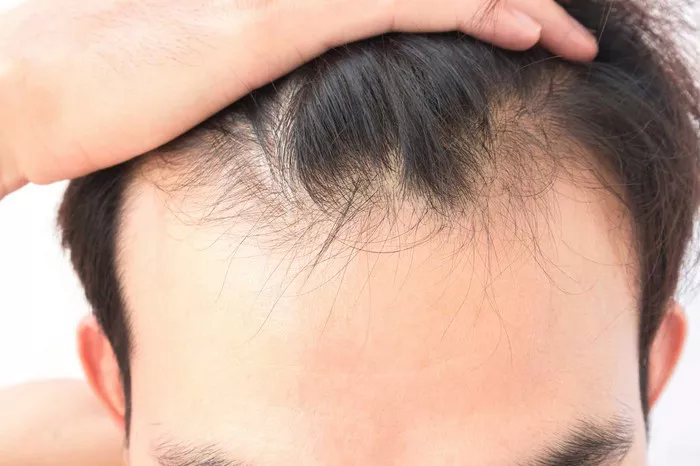A receding hairline is a common concern for many individuals, particularly as they age. While some degree of hair loss is natural over time, a receding hairline can impact one’s appearance and self-confidence. Understanding what a receding hairline looks like is essential for early detection and intervention. In this article, we explore the characteristics and signs of a receding hairline in detail.
Characteristics of a Receding Hairline:
Gradual Hair Loss: A receding hairline typically begins with subtle changes at the temples or forehead, where the hairline starts to move backward over time. The hair may appear thinner or sparser in these areas, creating a more pronounced “V” shape at the front of the scalp.
Widening of the Forehead: As the hairline recedes, the forehead may appear wider than before, with more of the scalp becoming visible. This widening effect is often accompanied by a noticeable change in the overall shape of the face, which can contribute to feelings of self-consciousness.
Thinning at the Crown: In addition to receding at the temples, some individuals may also experience thinning or balding at the crown of the head. This pattern of hair loss is commonly associated with male and female pattern baldness, which can further exacerbate the appearance of a receding hairline.
Hairline Patterns: Receding hairlines can vary in their presentation, depending on factors such as genetics, age, and hormonal influences. Common patterns include the “M-shaped” receding hairline, where the hairline forms a distinct “M” pattern as it recedes, and the “U-shaped” receding hairline, characterized by a more gradual recession without sharp corners.
Hair Texture Changes: Along with changes in hairline position, individuals may also notice alterations in hair texture and quality. The hair may become finer, shorter, and less dense, making it more prone to breakage and shedding.
Signs of a Receding Hairline:
Visible Scalp: One of the earliest signs of a receding hairline is the increased visibility of the scalp, particularly in the frontal and temple regions. This may be noticeable when styling the hair or under certain lighting conditions.
Thinning Hair: Hair thinning, especially around the temples and crown, is a common indicator of a receding hairline. The hair may feel finer and less dense, with greater transparency when viewed against the scalp.
Changes in Hairstyle: Individuals with a receding hairline may find themselves adjusting their hairstyle to conceal or minimize the appearance of hair loss. This may involve opting for shorter cuts, using volumizing products, or experimenting with different hair parting techniques.
Hairline Regression: Over time, the hairline may continue to recede further back on the scalp, creating a more pronounced recession. This progression can be gradual or rapid, depending on various factors such as genetics and hormonal influences.
Increased Hair Shedding: While some degree of hair shedding is normal, excessive shedding, especially around the frontal and temple areas, may indicate a receding hairline. Individuals may notice more hair fall-out during grooming or when washing their hair.
Distinguishing Between Natural Hairline Variations and Receding Hairlines:
Normal Hairline: In some cases, what appears to be a receding hairline may simply be a natural variation in hairline shape and position. It’s essential to consider factors such as family history, age, and overall hair density when assessing changes in the hairline.
Maturing Hairline: As individuals age, the hairline may naturally mature, resulting in slight changes in shape and position. A maturing hairline typically recedes slightly at the temples without significant thinning or balding.
Temporary Hair Loss: Certain factors such as stress, illness, hormonal changes, or medication can cause temporary hair loss, which may mimic the appearance of a receding hairline. In these cases, hair growth typically resumes once the underlying cause is addressed.
Conclusion:
In conclusion, recognizing the signs of a receding hairline is crucial for early detection and intervention. Characterized by gradual hair loss, widening of the forehead, and changes in hair texture, a receding hairline can impact one’s appearance and self-confidence. By understanding the distinguishing features of a receding hairline and differentiating them from normal hairline variations, individuals can take proactive steps to address hair loss and preserve their hair health. Consulting with a healthcare provider or dermatologist can provide personalized guidance and treatment options tailored to individual needs. With timely intervention and proper care, managing a receding hairline is possible, empowering individuals to maintain a vibrant and confident appearance.
When Does Hairline Start Receding


